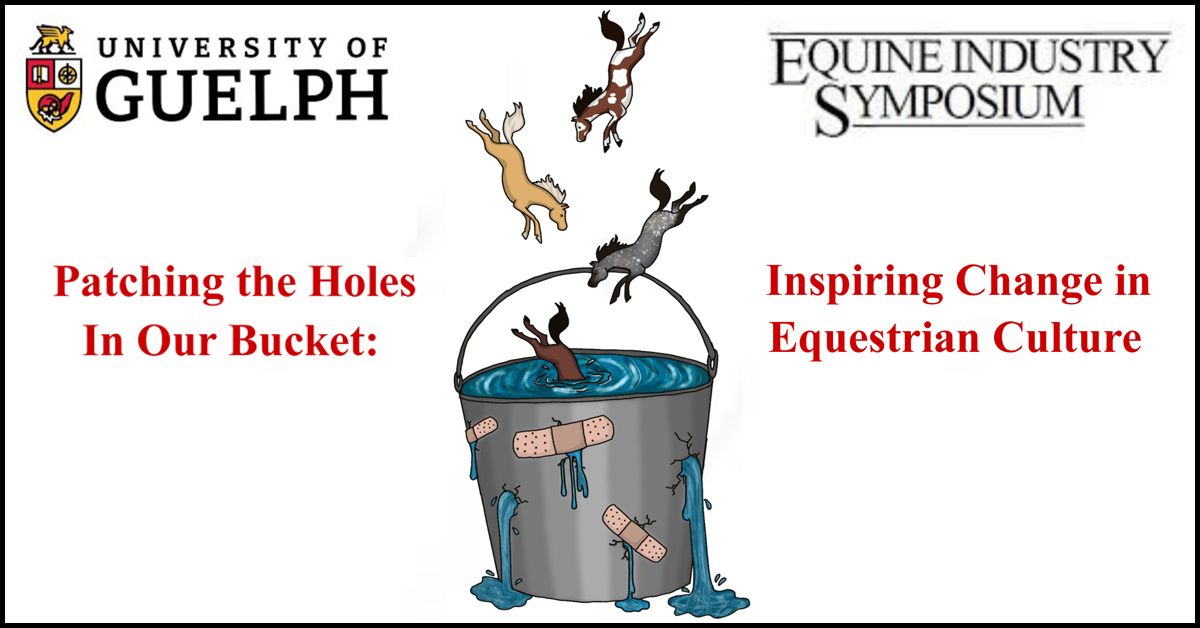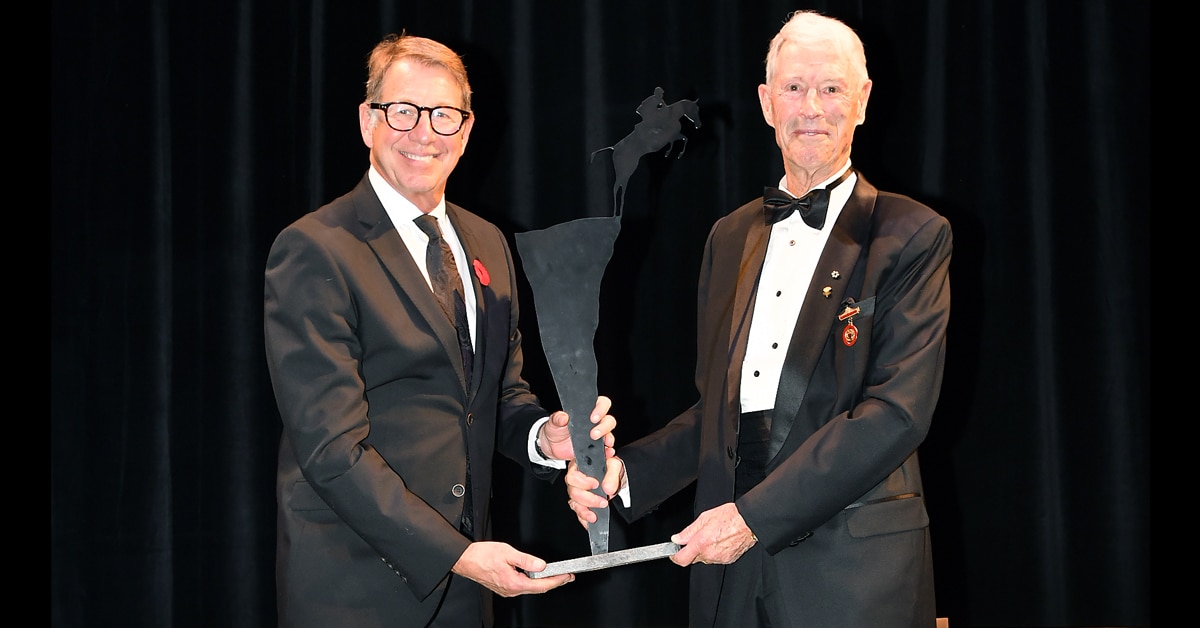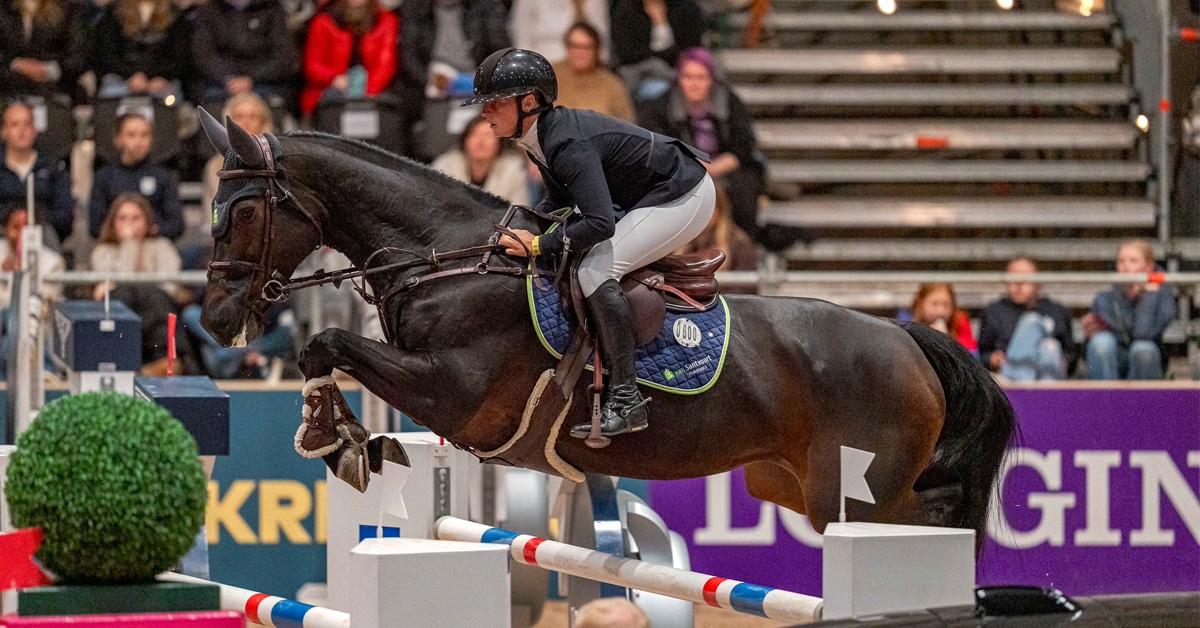Seven months after the abrupt and celebrated departure of former CEO Eva Havaris and the election of a new board, Equestrian Canada is showing signs of healing from the damage done over the last few years. Evidence of a new and positive attitude were showcased at the recently held EC convention where attendees expressed a renewed sense of optimism. There remains, however, a significant backlog that will take some time to properly address.
The Best News: TRANSPARENCY
Starting with the first meeting of the new board in October 2017, the publicly-posted minutes are now much more comprehensive and include details of the discussion. The importance of this single act of transparency can’t be understated.
Historically, EC has always made complete board minutes available, but the previous board opted for maximum secrecy. Among many other policy decisions of the old regime, the exclusion of any comments or concerns raised by board members – many of whom opted to resign – added to the culture of mistrust which was damaging to the organization.
The ability – whether or not it is exercised – for anybody to be able to read about what business is being addressed by a governing organization is a building block for establishing and maintaining trust. Such transparency fosters a sense of community that had been destroyed in EC over the last few years. Respected leaders the world over recognize the importance of transparency to improve relationships and increase engagement – both areas that the new board has identified as necessary for the future of the equine industry. As such, they have returned to the policy of publicly posting full minutes. Of course, they still have the option of going “in camera” (off the public record) for sensitive matters (like a CEO termination agreement), and they limit the discussion they publish on some topics, but for the majority the business of EC is available for all to review– and they have lots to cover.
FINANCIALS – They (will soon) Exist
After showing large losses in various accounts over the last couple of years, stabilizing EC’s finances is one of the most critical issues facing EC. Rupert May is now the chair of the finance committee and has extensive accounting and practical experience in this very role. He has been working with Robert Westgarth, now EC’s Controller, to bring clarity to this department that hasn’t been able to produce reliable financials for a considerable time.
The majority of the difficulty stems from the decision made years ago to upgrade EC’s old accounting program to Microsoft NAV. Ironically, Havaris had listed this transition at the top of her list of “accomplishments” in the announcement of her departure, but the complexities of transitioning the old software to NAV were grossly miscalculated, resulting in the inability to produce budgets, among other issues.
On the job for just three months, the new board identified the problem and agreed that, regrettably, it was going to be necessary to swallow the losses invested in the NAV system in favour of switching to Quickbooks.
“The write-off of the investment in the NAV system is indeed very regrettable. The largest costs were with the implementation rather than the actual purchase, which was still significant,” are May’s comments in the December 15th board minutes. “However, these are sunk costs that have already been spent, with no impact on cash flow in the current or future years. This move will set EC clearly onto the path of good financial reporting which is very necessary and should be implemented as soon as possible.”
EC made the change to Quickbooks on April 1st and the full transition is expected to be completed by the end of April, with statements to relevant stakeholders coming in May 2018.
“Over the coming months, the Finance Team at Equestrian Canada will be working with the respective financial stakeholder groups to show them the new reporting formats, solicit their feedback and also assist with comprehension of how the financials are made up,” noted May. “We are determined that there is both transparency and understanding so this will be done in a methodical way.”
MEMBER DATABASE – Think National Points
Those trying to buy or renew licenses online will know that the online membership platform is not customer-friendly and needs to be revised. In addition, the sport community has long lamented EC’s inability to track national points. The recently revived Business Development committee, now headed by show jumping team member Chris Sorensen, aims to address both of these concerns.
“There is a need to upgrade the membership platform at EC in terms of making the membership sign-up process simpler, more efficient,” are Sorensen`s comments in the January 30th board minutes. He went on to note that the system should be able to interact with the provincial membership systems, have the ability to track national point standings, assist the Federation in being more efficient, and provide participants a better sense of value.
Whether EC will be able to find a program that meets all those criteria is yet to be determined, but there are certainly many options and companies offering these types of services. Interestingly, board member Rupert May runs one such company and has been recusing himself from any discussions on the topic to avoid any conflicts of interest. Similarly, fellow board member Craig Collins, who administers Ontario’s point system, has also been recusing himself from these discussions.
The inability to track national points, however, hasn’t been for lack of desire; rather, it has been the many complexities of administering such a program across a vast country with varied needs and levels of service that has been the impediment. Consider that many shows are run by volunteers who may not have the time or tools available (current computer with reliable internet) to submit the required information, and shows may not have the resources available to cover this added burden. Another issue is that shows may accidentally permit people to compete in classes and collect points for which they aren’t eligible. These problems aren’t insurmountable, but they take considerable time and financial resources to overcome and will require EC to commit to a new level of professionalism that may be necessary for the industry to prosper in the 21st century.
PROVINCES
The provinces have worked very hard with EC to develop a new plan to make some positive change. Last year, Alberta and Ontario were so frustrated with the lack of progress that the provinces withheld their funding to EC because the national federation has failed to deliver the programs outlined in their contracts.
Rather than signing an MOU (Memorandum of Understanding), this year the provinces are signing an MOA (Memorandum of Agreement) which reflects the renewed spirit of cooperation between the two organizations. The content of the MOA is different in that it focuses on program delivery and how EC is going to commit the provincial dollars to fund those initiatives.
The first initiative that EC has approved and is being undertaken by the provinces is to better organize the sport’s coaching records. The Canadian Association of Coaches (CAC) has a database called “The Locker” that is available to all coaches and allows them to track their progress and achievements. In the past, The Locker wasn’t properly updated so coaches could not rely on the database to accurately reflect all the courses and certifications they had completed. It is hoped that the project will be finished by the end of the year, by which time The Locker will have all the same information as the provinces and EC databases and a new system will be put in place to insure all parties have consistent and accurate information going forward.
Once The Locker clean-up is completed, the next major tasks are to address the Learn to Ride program and the content of the coaching program. The Learn to Ride program likely needs to be updated so that it is more consistent with Long Term Equestrian Development (LTED), but it also needs to branch into discipline-specific material, which it currently does not. The mandate of the coaching program will also need to be reviewed to determine if it focuses more on personal riding skills than the very different skill of actually knowing how to coach students.
Longer-term, the provinces will need to address the large gap in programming from where the Learn to Ride program ends and the High Performance Young Rider program starts, but first things first.
In a gesture of renewed good faith, the provinces have agreed to pay the funds they had previously withheld and generally feel more confident in EC than they have in a while.
VOTING MEMBERS
The one area that still isn’t getting the attention it needs and deserves are the voting members. Recall, these 27 people are now the only “members” of EC, but aside from choosing the board and approving bylaws, they have very little other involvement in EC.
The 27 people are divided into three categories of voters representing sport, provinces, and industry, with each group having nine members. Given the diverse nature of the equine industry however, significant portions of each sector are omitted from each group (e.g.: there are 14 provinces/territories in Canada, so five of them don’t have a vote in category B).
The most pressing concern among the categories is the lack of official channels for communication, either between the categories, between categories and the individuals they represent, with outside interested organizations, or the community at large. While the categories may be keeping their own minutes, there isn’t any publicly available space where interested parties can read them or any newsletters circulated with pertinent information.
The other very serious issue for voting members is their inability to guide the board. EC’s Governance Manual notes that aside from voting on by-laws and voting in directors, the voters have no official mechanism to make requests of the board. Thus, once the board is in place, they aren’t required to consult with the categories which represent the “registered participants.” The problem with this oversight was highlighted by the previous board and CEO, who took full advantage by ignoring concerns and requests raised by a variety of interest groups.
Charles Cue is the board member in charge of EC’s governance committee. He acknowledged that he’s starting from the beginning and everything is rather unorganized, but he pledged to all the voting members to have communication and governance organized by September’s AGM.
NEW CEO
After the negative experience with the previous CEO, the new board made equestrian knowledge and background a part of the criteria for the new leader. Fulfilling this condition, the committee chose Richard Mongeau, who took office April 2nd. Mongeau has been the Executive Director at Cheval Quebec for the last 30 years and has a deep understanding of the industry, coaching, and governance which will stand him in good stead in this new role.
One of his first priorities will be to reassure EC’s staff that their concerns have been heard. A testament to the challenging environment created by Havaris, EC had more than 20 resignations in the past three years. Part of the problem is that EC doesn’t have an HR manager to do performance reviews, help with structure, review staffing issues, etc., so the board’s HR committee approved the creation of a part-time HR manager position and Mongeau will be part of the final decision on who is hired.
There is clearly a massive amount of work greeting Mongeau and most of it needs urgent attention, but his deep understanding of the industry and all the players will surely get him off on the right foot.
BOARD ELECTIONS
There will be four new directors voted on this year and the deadline for nominations is June 1, 2018, at 4 pm ET. The board has been short two members since they took office last year, because Jorge Bernhard and Lisa Lazarus both resigned shortly after the elections. Both of their terms were up in 2018 anyway and rather than fill the positions, the new board opted to wait until this year’s election cycle.
Interested candidates are encouraged to submit their application. It’s imperative that passionate and knowledgeable people step up and be part of the restoration of EC. The new board is demonstrating their skill and resolve in improving EC’s image, and many noted during the Convention that they are encouraged by what they have seen, but it will be the continued involvement and interest of the industry at all levels that will make this revival a success.
More News









